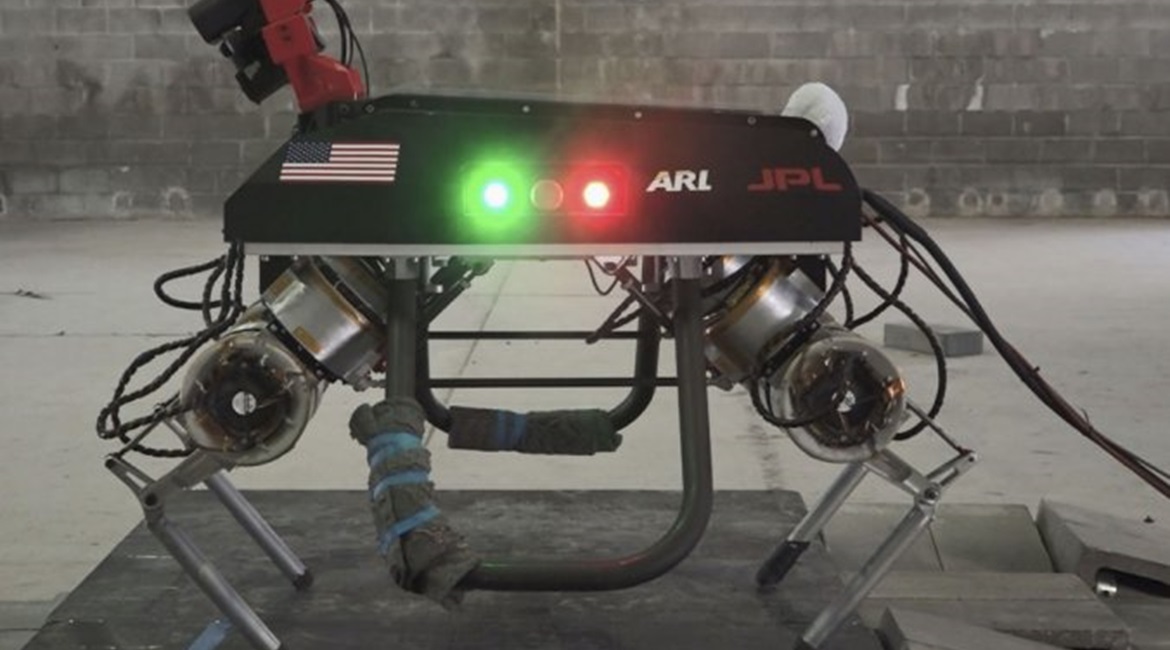
The US Army Research Laboratory (ARL) is pursuing a range of upgrades to its Legged Locomotion and Movement Adaptation (LLAMA) robot, including an effort to boost speed and mobility through system weight reduction, researchers told Jane’s .
The autonomous quadruped system was revealed in mid-September, with ARL highlighting its ability to work in concert with soldiers, lightening their physical workloads and increasing their mobility, protection, and lethality.

The quadruped LLAMA robot is being developed as part of ARL's Robotics Collaborative Technology Alliance, with researchers believing a quadruped robotic platform would provide new mobility options. (US Army)
The system was developed as part of ARL’s Robotics Collaborative Technology Alliance (RCTA) initiative. While this programme initially focused on wheeled and tracked platforms along with developing the intelligence and perception of autonomous systems, ARL research engineer Jason Pusey said a quadruped robotic platform would provide new mobility options in support of dismounted soldiers.
The goal is to effectively develop a ‘robotic dog’ that works as part of a team with human operators, Pusey told Janes . While the use cases for LLAMA have not yet been fully defined, ARL is targeting roles in surveillance and as a platform that can carry payloads, allowing soldiers “to offload some of their gear onto this particular platform”.
Pusey also noted that while the first version of LLAMA weighs about 85 kg, a new 75 kg variant is currently in development. The main advantage of this lower weight is increased mobility as well as greater speed and endurance, he said.
Looking to read the full article?
Gain unlimited access to Janes news and more...




